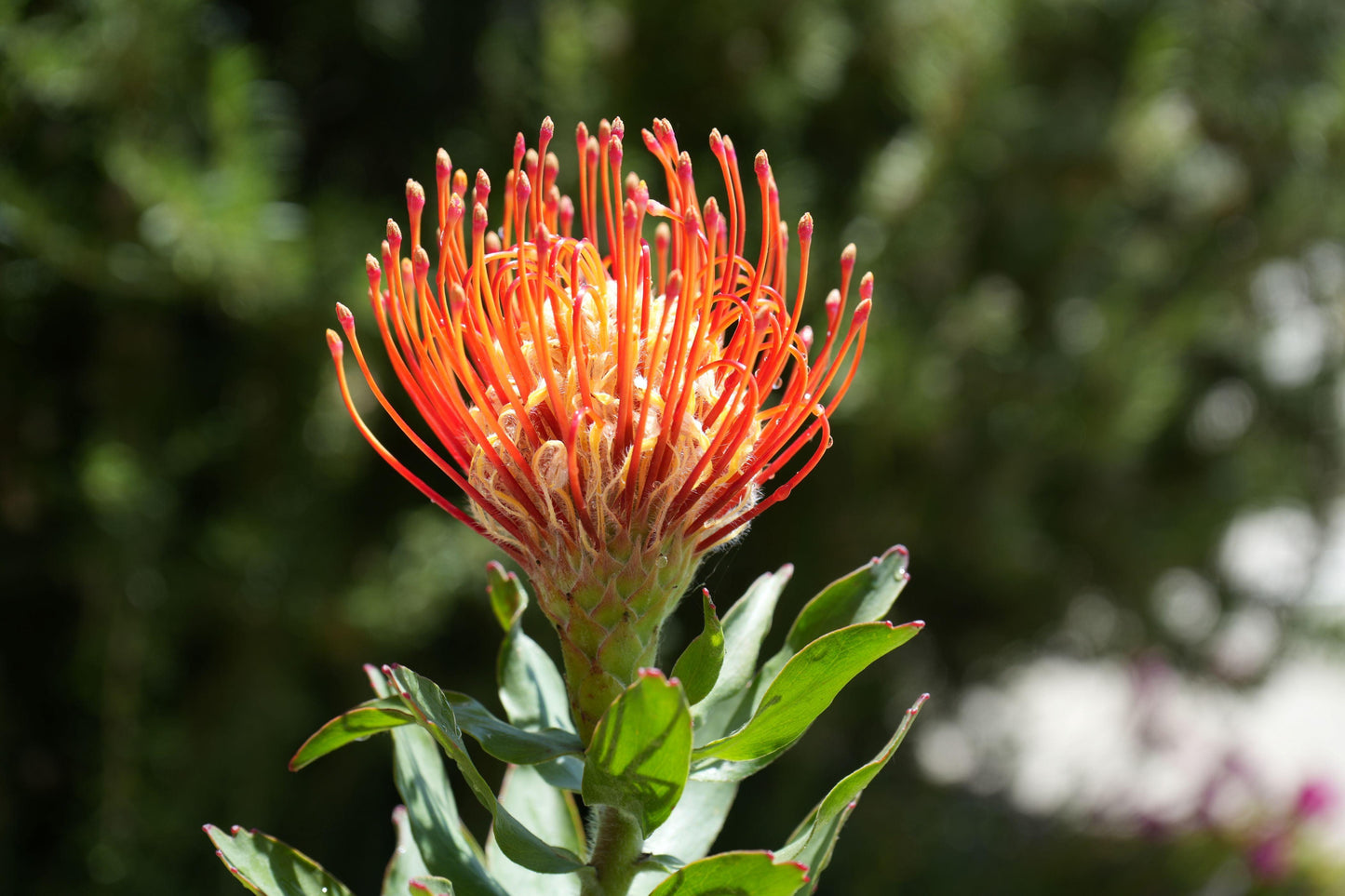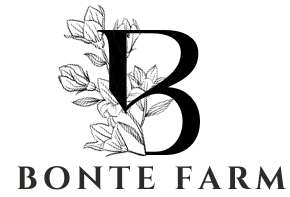Bonte Farm
Leucospermum ‘Sunkist’: Radiate Your Landscape with Golden-Red Pincushion Blooms
Leucospermum ‘Sunkist’: Radiate Your Landscape with Golden-Red Pincushion Blooms
Couldn't load pickup availability
☀️ Leucospermum 'Sunkist': The Radiant Orange-Yellow Pincushion
The Leucospermum 'Sunkist' is a well-loved and visually appealing Pincushion Protea hybrid (Leucospermum genus) recognized for its neat, mounding habit and beautiful, citrus-bright flowers.1 This attractive evergreen shrub is a popular choice for adding year-round structure and intense color to sunny borders. It produces abundant, large, globe-shaped blooms with pin-like styles in a dazzling blend of bright orange and sunny yellow, reminiscent of a warm sunset. 'Sunkist' is an excellent, medium-sized specimen plant for creating contrast and a luminous focal point in Mediterranean, coastal, and architectural gardens. Its robust form, superior drought tolerance, and consistent flowering make it a resilient and low-maintenance choice, yielding superb, strong-stemmed long-lasting cut flowers and attracting nectar-feeding birds.
Botanical Characteristics
|
Characteristic |
Detail |
|
Scientific Name |
Leucospermum 'Sunkist' (Hybrid Cultivar) |
|
Common Names |
Sunkist Pincushion, Orange-Yellow Pincushion. |
|
Growth Habit |
A sturdy, mounding evergreen shrub with a dense, rounded, and naturally bushy habit, ideal for borders. |
|
Foliage |
Features leathery, gray-green leaves with blunt or toothed tips, providing a handsome, neutral contrast. |
|
Flowers |
Large, round, distinctive Pincushion flower heads, typically 4–5 inches in diameter. Color is a radiant mix of bright orange and sunny yellow, often with yellow tips. |
|
Flowering Season |
Known for its extended and reliable bloom period, typically flowering heavily from late winter through spring, providing essential cool-season warmth. |
|
Cut Flower Use |
Premier professional-grade cut flower, highly valued for its strong stems, striking bi-coloration, and excellent vase life. |
Mature Size
'Sunkist' is a moderate-sized shrub that fits neatly into most garden settings.
- Height: Typically reaches 4–6 feet (1.2–1.8 meters) tall.
- Spread: Achieves a dense, manageable spread of 4–6 feet (1.2–1.8 meters) wide.
- Its moderate size is perfect for creating a bold, structural focal point without overwhelming space.
USDA Hardiness Zone
This Leucospermum hybrid is best suited for USDA Hardiness Zones 9–11. It requires a mild, nearly frost-free climate and thrives in full sun, performing exceptionally well in sunny, dry-summer regions. It is intolerant of sustained freezing temperatures.
Cultivation and Care
|
Aspect |
Care Instructions |
|
Sunlight |
Requires full sun (a minimum of 6 hours of direct sun daily) and excellent air circulation to ensure strong growth and maximum bloom production. |
|
Soil |
Essential: Demands perfectly well-drained, acidic soil (pH 5.0–6.0). Thrives in sandy, gritty, low-nutrient soils and must not sit in heavy, wet clay. |
|
Water |
Highly drought-tolerant once established. Water deeply during the first year. Mature plants require minimal summer water; overwatering is the primary threat. |
|
Fertilizer |
Crucial: ABSOLUTELY AVOID all phosphorus fertilizers. Proteaceae are extremely phosphorus-sensitive. Use a specialized, low-phosphorus formula or skip fertilizing entirely. |
|
Pruning |
Mandatory: The best pruning is achieved by harvesting the flowers heavily deep into the leafy growth. This encourages new growth from the base and maintains a dense, productive shape. |
Landscape Use
- Specimen Plant: Used as a highly colorful, central focal point due to its brilliant orange-yellow hues.
- Border Plant: Excellent for providing year-round structure and cool-season color in sunny borders.
- Cut Flower Garden: Grown specifically for its professional-grade, high-yield, long-lasting floral stems.
- Xeriscape Design: A cornerstone, low-water, low-fertility plant for arid landscapes.
Wildlife Attraction
The distinctive flower heads produce a generous amount of sweet nectar, making them extremely attractive to nectar-feeding birds, which serve as the primary pollinators. Planting 'Sunkist' is an excellent way to invite hummingbirds and native birds into the cool-season garden.
Pest and Disease Resistance
Leucospermum 'Sunkist' is generally a hardy and robust plant when its crucial drainage needs are met.2 The most common issues are root rot and collar rot, which are caused by poor soil drainage or overwatering—this is the single most critical factor to avoid.
Propagation
To ensure the resulting plant maintains the specific, desirable traits, mounding habit, and radiant orange-yellow color of the 'Sunkist' cultivar, propagation must be conducted using vegetative methods. Semi-hardwood cuttings are the preferred and most reliable technique, generally taken during the warmer months. Propagation from seed is not used for maintaining cultivar identity.
Share


